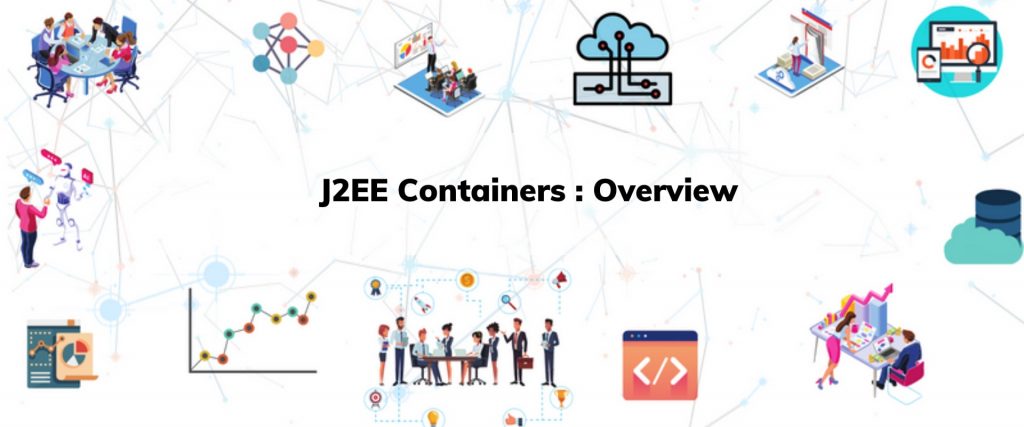An approach to web and server applications | J2EE Containers
The application server which controls and provides services through an interface is called a container. The J2EE container helps in the deployment and execution of Java Enterprise Edition(J2EE) components. In J2EE there are 5 containers types Three of these are server-side containers:
- The server, which provides the Java Enterprise Edition(J2EE) platform.
- An EJB container contains (Enterprise java bean) EJB components.
- A Web container that manages servlets.
The other two containers are user-side:
- An application container contains standalone Graphical User Interface(GUI) and batch-type programs.
- An applet container that contains a java plugin.
(imagelink:- http://homepages.thm.de/~hg10013/Lehre/MMS/WS0102_SS02/J2EE-3tier/images/J2EEArchitektur2.GIF)
Application Client Container:
This container contains a host application component, It runs on the user computer and it can interact with its other components. In java it helps to build robust applications, These applications can also interact with data resources. This container maintains the execution of application client components. This server can handle all application operations between users and databases.
Web Container:
This container contains a component that works on the server-side. A Web application executes within a Web container of a Web server which is also known as servlet container. This container provides the runtime environment through components. Web container manages the execution of the JSP page and servlet components for Java Enterprise Edition(J2EE) applications.
therefore, This web container provides the same services as a java server page(JSP) container. Web components and their container run on the Java Enterprise Edition(J2EE) server. Web server is a server that handles HTTP requests sent by a user and responds with a HTTP response.
JavaBean Container(Enterprise Java Bean):
EJB container is a server-side component architecture. It is mainly in use for the modular construction of robust or web applications. An EJB container provides a run-time environment for beans within the application server. so, EJB container works as a bridge between the user-written business logic within the bean and the rest of the application on the server-side.
although It maintains the execution of enterprise beans for J2EE applications. Enterprise beans and their container run on the Java Enterprise Edition(J2EE) applications server.
therefore, This EJB container provides local and remote access. Enterprise bean can be divide up into session beans, entity beans, and message-operate beans which depends on the data.
thus, Session beans are processes for Java Enterprise Edition(J2EE) applications typically are in use by a single client. so, Entity beans represent persistent data, which is maintain in a database. so, Message-driven beans asynchronously pass messages to the application module.
(image link:- https://www.oreilly.com/library/view/open-source-for/0596101198/tagoreillycom20070223oreillyimages103135.png)
A container provides a large number of services:-
- Invocation — your code gets loaded and gets run when needed.
- Transactional context — most container code also occurs in an Atomicity, consistency, isolation, durability (ACID) transaction context.
- Configuration — things like java database connectivity(JDBC) connections are thus pass up to you by the container.
- Security — the container will also manage access to your code and data to authorized users.
- Scalability — since the container maintains it can schedule it and automatically fire up extra copies if the load gets heavy, or, can be statically configured to run several instances in parallel.
- Encapsulation — Your program exposes a single interface to the container. However, externally it may expose this interface in a variety of forms.
- Common services — such as logging, services exposed by other EJBs.
Conclusion:
Basically, a java Enterprise Edition(J2EE) Explains how web applications and Graphical user interface applications run or execute on the server-side and client-side. so, This Container helps a developer to maintain logic and work between a database and developer application. hence, These containers help developers to create robust applications and maintain security.
written by: Rohit Damji
reviewed by: Soutik Maity
If you are Interested In Machine Learning You Can Check Machine Learning Internship Program
Also Check Other Technical And Non Technical Internship Programs

